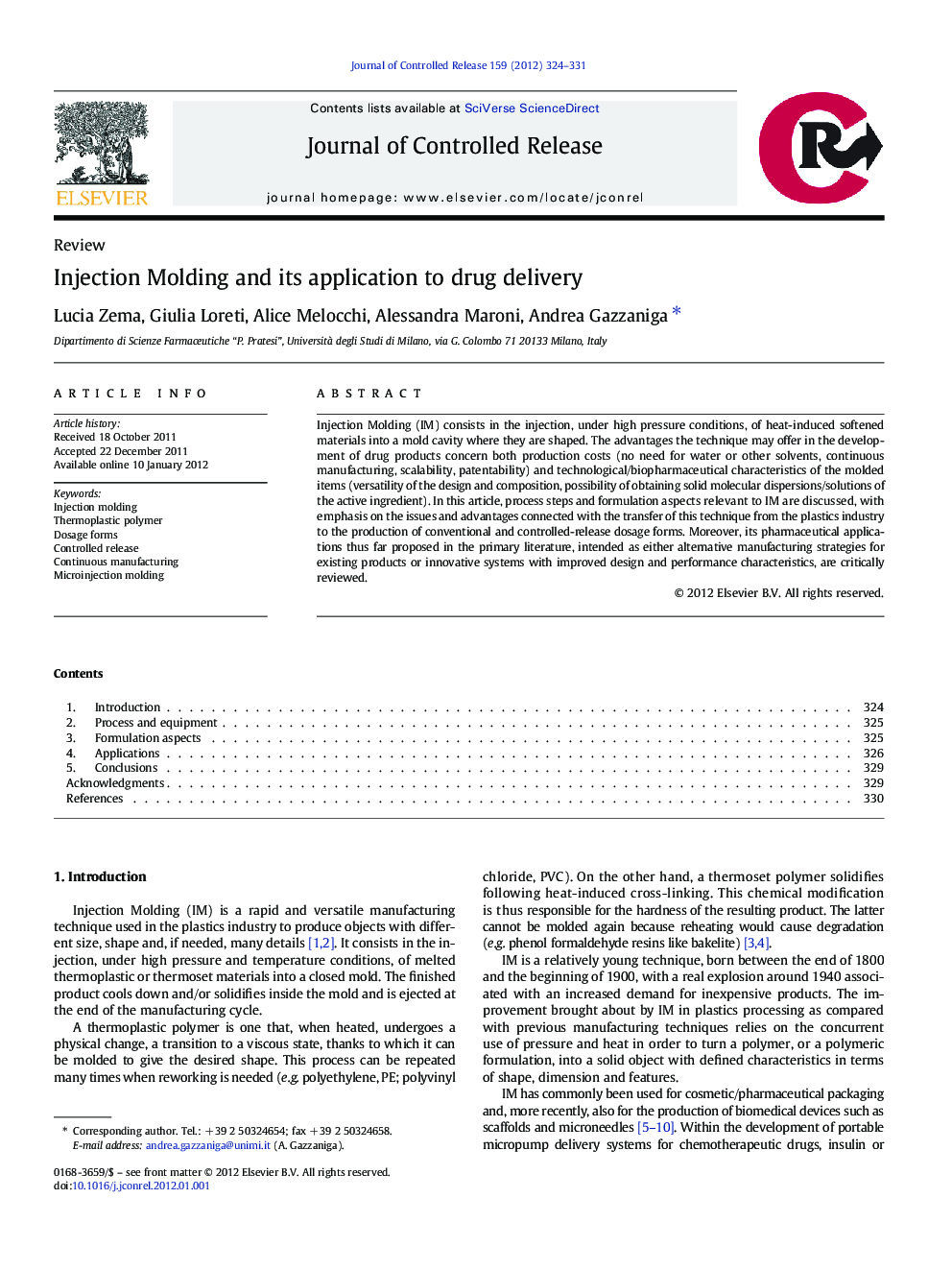| Article ID | Journal | Published Year | Pages | File Type |
|---|---|---|---|---|
| 1424693 | Journal of Controlled Release | 2012 | 8 Pages |
Injection Molding (IM) consists in the injection, under high pressure conditions, of heat-induced softened materials into a mold cavity where they are shaped. The advantages the technique may offer in the development of drug products concern both production costs (no need for water or other solvents, continuous manufacturing, scalability, patentability) and technological/biopharmaceutical characteristics of the molded items (versatility of the design and composition, possibility of obtaining solid molecular dispersions/solutions of the active ingredient). In this article, process steps and formulation aspects relevant to IM are discussed, with emphasis on the issues and advantages connected with the transfer of this technique from the plastics industry to the production of conventional and controlled-release dosage forms. Moreover, its pharmaceutical applications thus far proposed in the primary literature, intended as either alternative manufacturing strategies for existing products or innovative systems with improved design and performance characteristics, are critically reviewed.
Graphical abstractFigure optionsDownload full-size imageDownload high-quality image (247 K)Download as PowerPoint slide
